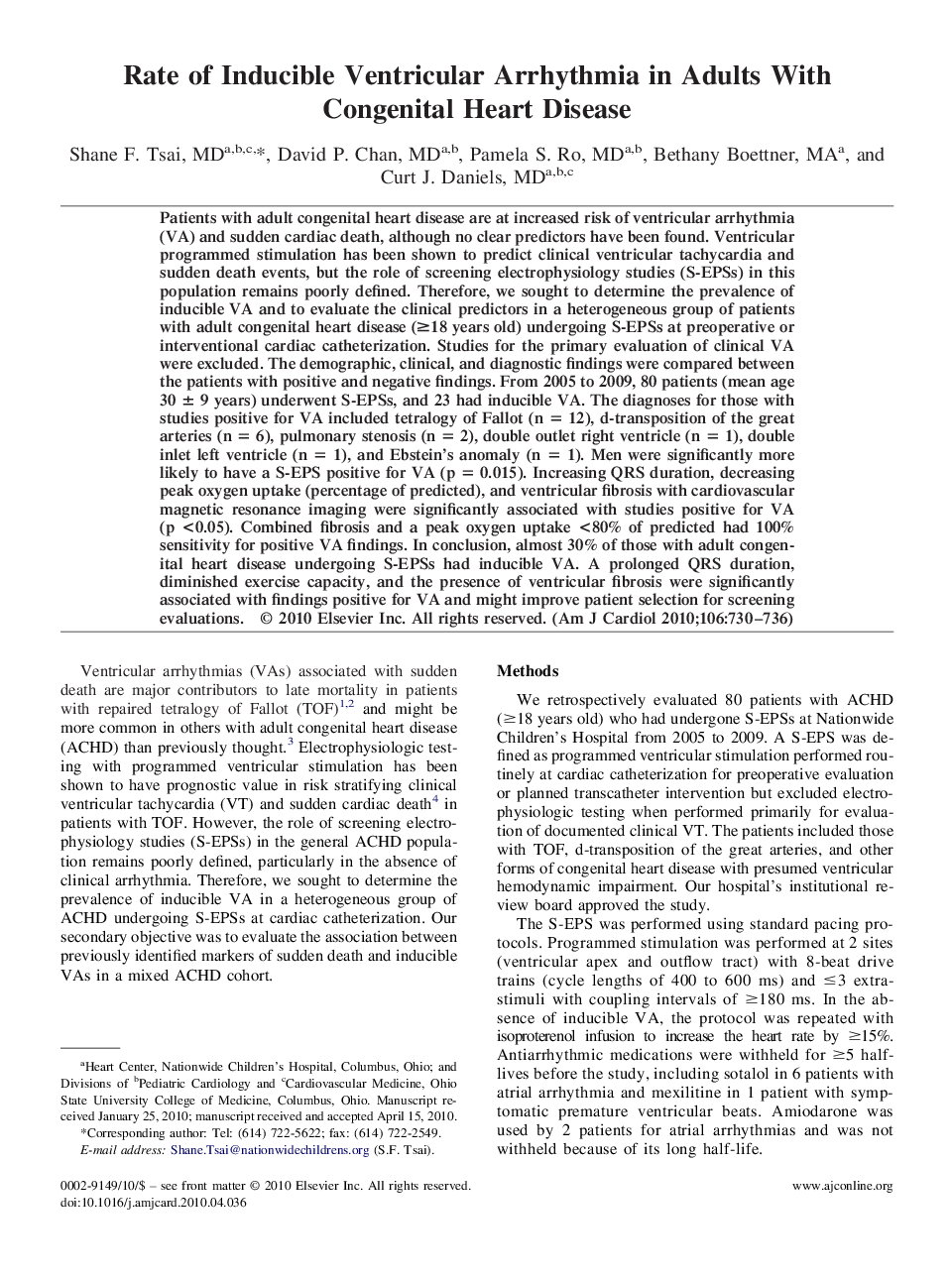| Article ID | Journal | Published Year | Pages | File Type |
|---|---|---|---|---|
| 2857146 | The American Journal of Cardiology | 2010 | 7 Pages |
Patients with adult congenital heart disease are at increased risk of ventricular arrhythmia (VA) and sudden cardiac death, although no clear predictors have been found. Ventricular programmed stimulation has been shown to predict clinical ventricular tachycardia and sudden death events, but the role of screening electrophysiology studies (S-EPSs) in this population remains poorly defined. Therefore, we sought to determine the prevalence of inducible VA and to evaluate the clinical predictors in a heterogeneous group of patients with adult congenital heart disease (≥18 years old) undergoing S-EPSs at preoperative or interventional cardiac catheterization. Studies for the primary evaluation of clinical VA were excluded. The demographic, clinical, and diagnostic findings were compared between the patients with positive and negative findings. From 2005 to 2009, 80 patients (mean age 30 ± 9 years) underwent S-EPSs, and 23 had inducible VA. The diagnoses for those with studies positive for VA included tetralogy of Fallot (n = 12), d-transposition of the great arteries (n = 6), pulmonary stenosis (n = 2), double outlet right ventricle (n = 1), double inlet left ventricle (n = 1), and Ebstein's anomaly (n = 1). Men were significantly more likely to have a S-EPS positive for VA (p = 0.015). Increasing QRS duration, decreasing peak oxygen uptake (percentage of predicted), and ventricular fibrosis with cardiovascular magnetic resonance imaging were significantly associated with studies positive for VA (p <0.05). Combined fibrosis and a peak oxygen uptake <80% of predicted had 100% sensitivity for positive VA findings. In conclusion, almost 30% of those with adult congenital heart disease undergoing S-EPSs had inducible VA. A prolonged QRS duration, diminished exercise capacity, and the presence of ventricular fibrosis were significantly associated with findings positive for VA and might improve patient selection for screening evaluations.
